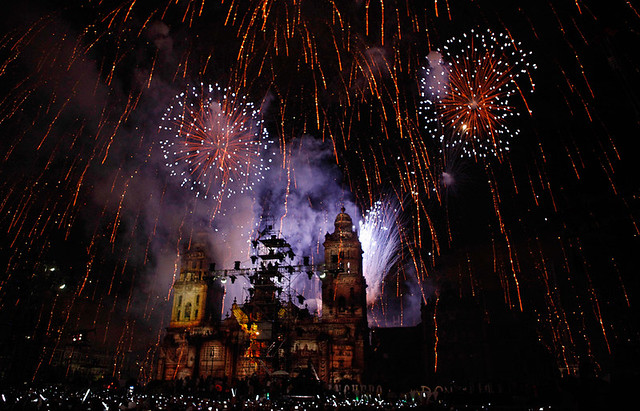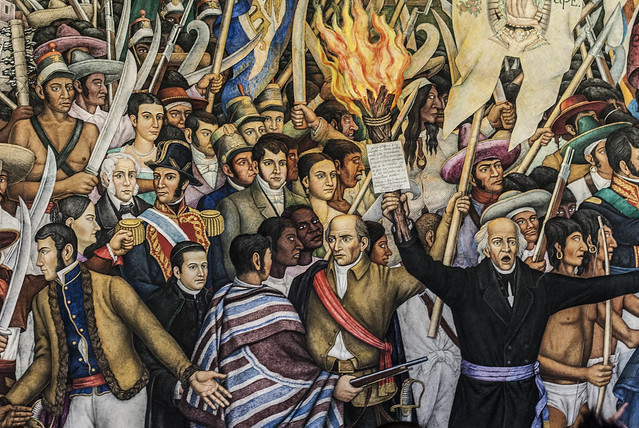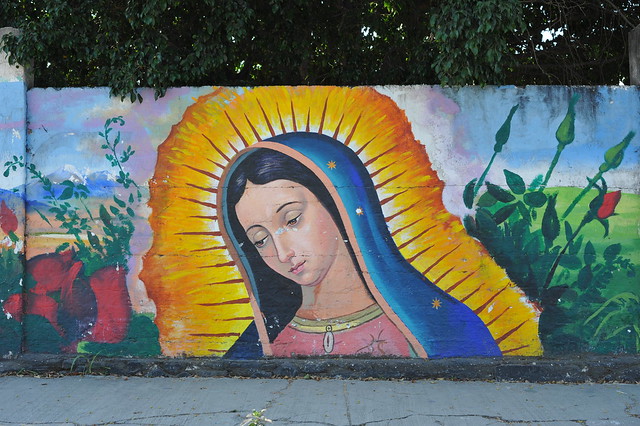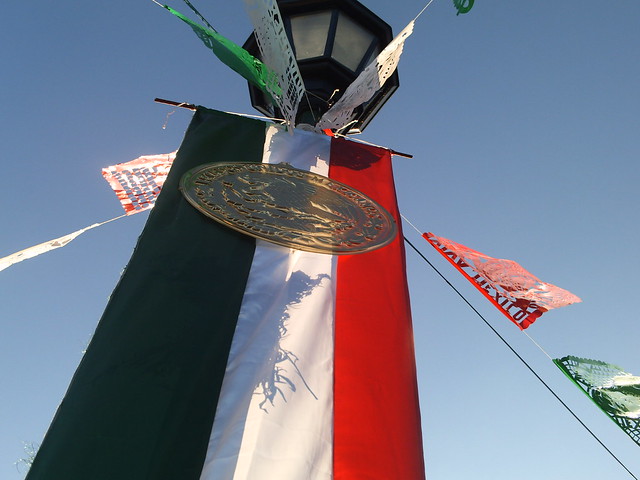On the night of September 15, Mexicans have their most important party of the year. They celebrate the independence of the Spanish crown through the commemoration of a historical event occurred in 1810 in a tiny town called Dolores, in the intendancy of Guanajuato.
In that place, the priest Miguel Hidalgo y Costilla rang the bells of his parish so that the people would meet and hear his call to rebellion against the government of New Spain.
Why was Spanish America divided into many countries while Brazil remained in only one country?
That fact became the historic “Grito de Dolores” of the priest Hidalgo, which marked the beginning of the independence struggle of what would later become Mexico.
However, more than 200 years after that event, there are still divergences in the books of the history of Mexican independence. Some have led to the reproduction of myths about what happened in the famous “Grito de Dolores” and what were really the intentions of the priest Hidalgo and his fellow insurgents.

1. Was there a call for independence?
Miguel Hidalgo is considered the “Father of the Nation” in Mexico for his call to the people to emancipate himself from the European government in the Viceroyalty of New Spain. The Creole priest – son of Spaniards, but born in America – was part of a group of conspirators, led by Ignacio Allende, who sought to overthrow the Europeans from the government of the viceroyalty.
Criollos, mestizos, mulatos or saltapatrás: how the caste division emerged during Spanish rule in America. But not everyone wanted independence, but the access of the Creoles to power.
In Spain, King Ferdinand VII had been deposed by Joseph Bonaparte, Napoleon Bonaparte’s elder brother, for what were convulsive moments in the Spanish empire.
History books in Mexico’s public schools say that Hidalgo did not seek independence (Historia, 4th grade, 2018 edition). The text indicates that the priest Hidalgo made the call to ” support the return of Ferdinand VII and dismiss the viceregal authority, since at that time did not seek independence itself, but only stop depending on Spain while it was occupied by the French army “.
However, the historian Carlos Herrejón, a specialist in the independence movement, disagrees with that perspective. “Ignacio Allende was about to invoke (adhere) to King Ferdinand VII, there were those who rejected him, like priest Hidalgo.”
” Hidalgo was for absolute independence, which is confirmed in his trial by Mariano Jiménez, who was also the one who joined the struggle in Guanajuato, and the priest wanted absolute independence,” he says.

2. What did Hidalgo scream?
A point of debate among historians has been to establish what Hidalgo said in his “Grito de Dolores”. There are multiple versions based on documents written after that event because at that precise moment there was not a documentary record of his exact words spoken before the town in Dolores.
These are several versions of the harangue of the priest attributed to characters of the time:
- “Long live our most holy mother of Guadalupe! Long live Fernando VII and the bad government dies!” (Bishop Manuel Abad and Queipo).
- “Long live America! Long live Fernando VII! Long live religion and the gachupines die!” (Fray Diego Bringas)
- “Long live religion! Long live our most holy mother of Guadalupe! Long live Fernando VII! Long live America and bad government die!” (Lucas Alamán).
But, after his investigations, Herrejón discards that Hidalgo has referred to the Virgin of Guadalupe or King Fernando VII in his cry before the crowd. And he quotes the independence captain Juan Aldama, a witness of the “Grito de Dolores”, to indicate the words that Hidalgo would have said that dawn:
“Children, help me defend the country, the oppression is over, the tributes are over, the one who follows me on horseback will have 1 peso, and the one who follows me on foot, 4 reales.”
Part of the confusion, he explains, occurs because Hidalgo gave three speeches to groups of followers that day. In the first, prior to the famous “Grito”, was when he referred to the Virgin of Guadalupe.

3. Did he have a banner of the virgin in his hand?
In illustrations and murals, the “Father of the Nation” has been painted carrying a banner of the Virgin of Guadalupe, the highest Catholic figure in Mexico since the sixteenth century. However, the day of the “Grito de Dolores” did not bring up its iconic rectangular banner, but it was during the first hours of its march for independence.
“A few hours after the Grito, when they pass through the sanctuary of Atotonilco, there the priest Hidalgo enters the sacristy and takes a banner of the Virgin of Guadalupe,” says the historian Herrejón.
4. Was it September 15 or 16?
Historians agree that Miguel Hidalgo performed the “Grito de Dolores” in the early hours of September 16, 1810. Herrejón has indications that it happened around six in the morning.
However, in the oral tradition of Mexico, it is said that President Porfirio Díaz -who was in power between 1876 and 1911- changed the celebration from the 16th to the night of the 15th. All in order that the national holiday coincided with his birthday, on the 15th.
However, documents from the time of the First Federal Republic (1823-1835) indicate that since that time the commemoration of the “Grito de Dolores” was held at midnight on September 15.
“Moving the scream at midnight was a symbolic and rhetorical issue, perhaps it was reaffirmed with Porfirio Díaz, but that comes from the First Federal Republic,” says Herrejón.
5. Did Mexico become independent in 1810?
The Mexicans celebrated in 2010 the bicentennial of their Independence. But in strict terms, the country will have reached its 200 years of independent life in 2021.
The first day of the Republic: the moment in which the Mexico that we know today was born
This is because the “Grito de Dolores” marks the beginning of the struggle for independence, which lasted for 11 years.
The triumphal entry of the Army of the Three Guarantees (fighting for independence, the union of the country and the establishment of the Catholic religion) to Mexico City occurred on September 27, 1821.
During the first decades of independence, in Mexico that date was commemorated with a respect similar to that which historically had the “Grito de Dolores”.
” He was aware that the consummation of Independence was very important, and later, for political and ideological reasons, it was suppressed on September 27,” explains Herrejón. At present, few Mexicans remember that their independence really occurred in 1821.

